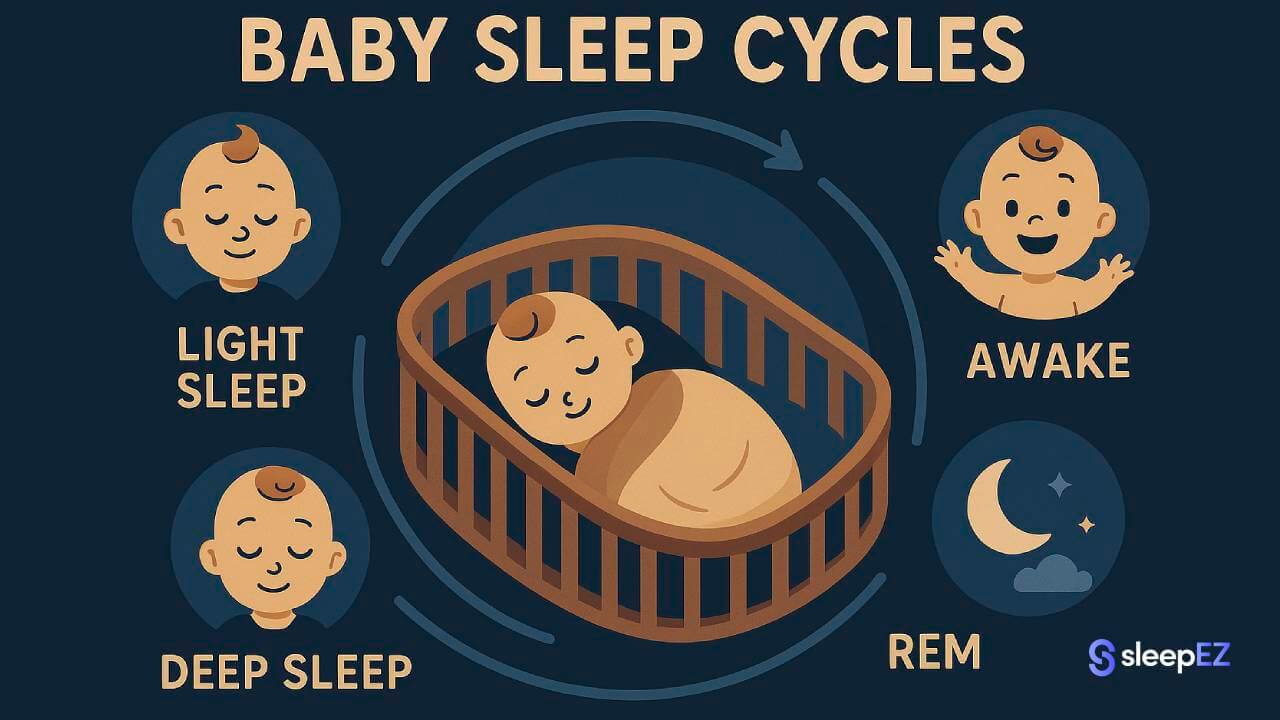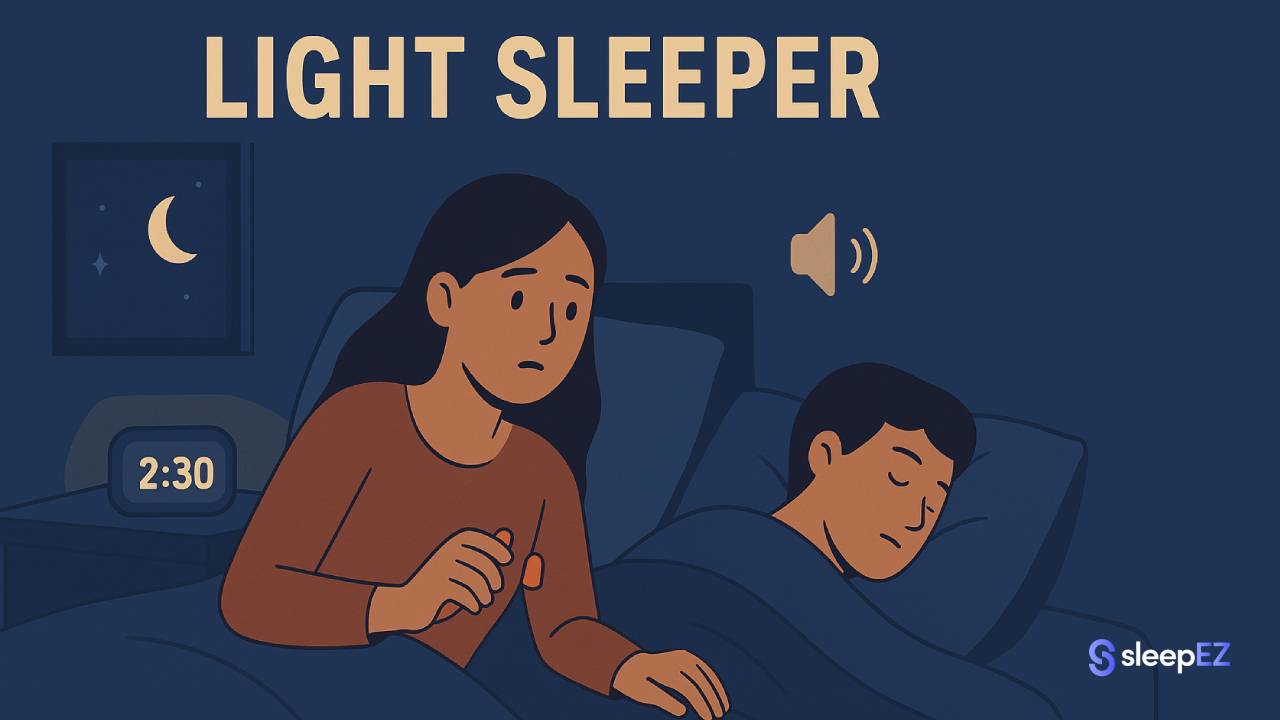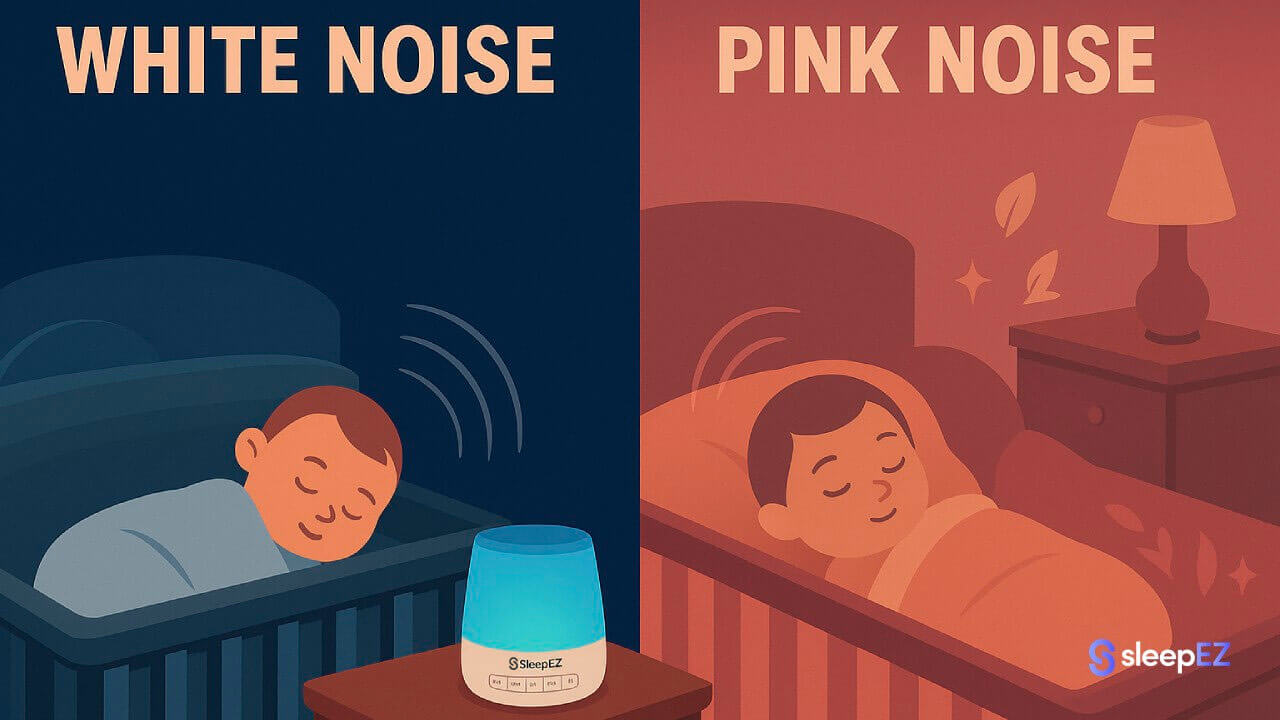If you've ever watched your baby twitch in their sleep or wake up exactly 50 minutes after you put them down, you've seen it: their sleep is nothing like yours. But why?
The baby sleep cycle is a completely different biological process designed for rapid brain development. It's shorter, lighter, and operates on a two-stage system that looks nothing like adult sleep.
This guide will break down the simple differences, what each stage looks like, and what you can do to help.
The 3 Biggest Differences Between Baby and Adult Sleep
Your baby's sleep operates on a completely different system than yours. The cycles are shorter, the stages are simpler, and they spend far more time in light, active sleep. These aren't flaws. They're features built for rapid growth and brain development.
1. Cycle Length: An adult sleep cycle is about 90 minutes. A baby's sleep cycle is only 50-60 minutes long. This explains why they can wake so often.
2. Cycle Stages: Adults have 4 stages of sleep. Newborns really only have two stages: "Active" and "Quiet" sleep.
3. Amount of REM Sleep: Adults spend roughly 20% of their sleep in REM (dreaming) sleep. Your baby spends a whopping 50% of their sleep in this stage.
What a Baby's 2-Stage Sleep Cycle Looks Like
Newborns move through sleep differently than older children and adults. Here's what happens during each stage.
Stage 1: Active Sleep (REM Sleep)
This is the first stage your baby enters. It's the "twitchy" stage.
What it looks like: Fluttering eyelids, smiling or frowning, twitching hands, irregular breathing.
Why it's important: This is critical for brain development. REM sleep supports the maturation of the central nervous system and plays a critical role in learning and memory consolidation. Your baby is building neural pathways and learning.
The problem: In this light sleep, your baby is very easily woken up.
Stage 2: Quiet Sleep (Non-REM Sleep)
After about 25-30 minutes, they move into "Quiet" sleep.
What it looks like: Still, breathing deeply and regularly, harder to wake.
Why it's important: This is the deep, restorative sleep for physical growth and repair.
Why Is All That "Active Sleep" So Important?
The light, twitchy sleep isn't a problem. It's a feature.
All this REM sleep is like a 24/7 "brain gym" for your baby. Babies spend up to 50% of their sleep time in this cycle during the first few months of life because REM sleep is important for their brain development and the consolidation of memories.
So, when you see your baby twitching, don't worry. Their brain is hard at work.
How to Help Your Baby Connect Sleep Cycles
Because your baby's cycle is only 50-60 minutes long and half of that is in "Active" sleep, they are very vulnerable to waking up between cycles.
A sudden noise, like a door closing or a car horn, is often all it takes to jolt them fully awake instead of letting them drift into their next sleep cycle.
This is where a white noise machine can be a parent's best tool.
A device like the Hush Light Sound Machine creates a constant, soothing "blanket of sound." This sound masks those sudden household noises, making it easier for your baby to transition from one sleep cycle to the next without fully waking up.
It's not about forcing sleep. It's about protecting the sleep they already have.
Read: White Noise Machine Baby
When Will My Baby's Sleep Cycle "Mature"?
Here's the good news: it gets better.
Around 2-3 months old, you'll see a big change. Their circadian rhythm starts to emerge. Rhythms in sleep-wake cycles, body temperature, and hormone production generally develop between 1 and 3 months of age. They begin to learn day from night.
By 6 months old, their sleep cycles will look much more like an adult's. The total NREM and REM sleep cycle becomes longer. They develop more defined sleep stages and can sleep for longer stretches.
When to Talk to Your Pediatrician
While all this is normal, you should always trust your gut. Talk to your pediatrician if:
- You have any concerns about your baby's breathing
- Your baby seems excessively fussy or has trouble feeding
- You just feel something is "off" (always trust a parent's instinct)
Your pediatrician knows your baby's individual health history and can provide personalized guidance.
Conclusion: A Different Kind of Sleep for a Different Kind of Job
Your baby's sleep cycle isn't "broken." It's just different. It's the perfect, high-speed system for the massive job of growing and learning.
Understanding why they sleep this way can make it a little easier to navigate those challenging early months.




Leave a comment
This site is protected by hCaptcha and the hCaptcha Privacy Policy and Terms of Service apply.